Get Your Free Mesothelioma Guide

Find a Top Mesothelioma Doctor

Access Help Paying for Treatment

Asbestos was used to insulate and fireproof machinery and equipment in power plants. Turbines, boilers, arc chutes, pipes and other equipment contained asbestos. As a result, power plant workers have higher rates of asbestos-related diseases including mesothelioma.
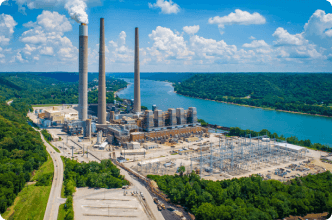
Power plants were built with asbestos products to prevent fires and protect the machinery, including boilers, pipes and turbines, because asbestos is an effective insulator for intense heat. Over time, the products deteriorated and released asbestos fibers, placing many workers and their families at risk of asbestos exposure.
Other asbestos products regularly used in power plants included acoustical plaster, asbestos blankets, asbestos paneling, joint compounds, mastic, cement, firebricks and gaskets.
Workers responsible for building and maintaining these plants wore protective clothing and safety gear that contained asbestos. Pants, coats, aprons, mitts, masks and shoe coverings contained asbestos through the 1980s.
Asbestos exposure was virtually unavoidable in power plants built prior to the 1980s. Doctors and scientists began informing plant owners and others about the serious health dangers of asbestos in the 1930s. Plant owners began relaying warning to workers after government regulations took hold in the 1970s.
Exposure to legacy asbestos products remains a risk for power plant workers. For example, according to a January 2022 news report, a power plant in Austin, Minnesota, had to remove asbestos-containing materials before the plant could be demolished. The plant was built in 1971 when the use of asbestos was widespread. Maintenance workers who repair asbestos-containing equipment face the greatest risk of exposure in power plants.
Insulators, pipefitters, electricians, welders, maintenance workers and other laborers directly handled asbestos by fitting, drilling, sanding or cutting products that released toxic fibers. Managers, operators and engineers who worked around these dangerous tasks were at risk of indirect exposure.
Pipes, electrical wires, generators and other high-temperature equipment and machinery were wrapped with asbestos lagging and insulation. Workers who installed these products and those who had to remove and replace them to make repairs were exposed to asbestos.
Both direct and indirect exposure put power plant workers at risk of later developing asbestos-related diseases including cancer and incurable pulmonary diseases. There is a latency period between initial exposure to asbestos and development of related diseases that ranges from 20 to 60 years.
Former power plant employees should monitor their health for respiratory symptoms that may be signs of mesothelioma, asbestosis and asbestos-related lung cancer. Anyone diagnosed with a related condition may seek financial compensation through litigation or asbestos trust fund claims.
Many power plant workers who developed asbestos-related diseases have successfully filed lawsuits against former employers and manufacturers of asbestos products.
Although many corporate executives knew about the deadly effects of asbestos exposure, they continued using the mineral without supplying employees any information about its dangers or giving them safety equipment as protection. It was typical for workers to handle asbestos without any protection.
Get Your Free Mesothelioma Guide

Find a Top Mesothelioma Doctor

Access Help Paying for Treatment

According to the U.S. Energy Information Administration, there are about 11,070 utility-scale electric power plants and 55 nuclear power plants actively operating in the U.S.
Information on when these plants were constructed varies, but the administration says most nuclear power plants were constructed between 1970 and 1990, when asbestos-containing products were still commonly used despite increasing regulation.
The risk of asbestos exposure remains at many power plants throughout the country. Some legacy asbestos products have been encapsulated to reduce the risk of exposure. Unfortunately, the risk of asbestos exposure remains for those who perform maintenance work in older power plants.
Duke Energy is one of the country’s largest electrical power companies. It operates coal plants, oil plants, nuclear plants and hydrogen energy plants. Based in Charlotte, N.C., it bought and merged with several utilities over the past two decades. It now supplies energy to some four million customers in the Carolinas, Florida, portions of the Midwest, Canada and Latin America.
In company financial reports, Duke says that it has faced numerous personal injury claims associated with asbestos use in construction and maintenance tasks at its power plants during the 1960s and 1970s.
Duke noted in February 2022 that it has $501 million set aside to handle asbestos litigation in addition to insurance policies. The company stated that the number of claims had increased significantly since 1977, prompting it to secure insurance to cover approximately $1.6 billion in claims.
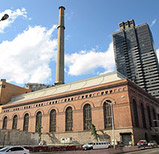
Con Edison’s power plants served New York City and its suburbs for decades, and they employed tens of thousands of New Yorkers. Many of these workers were exposed to asbestos fibers as well as polychlorinated biphenyls (PCBs) and coal tar.
Like many power plants, those built by Con Edison included steam pipes, wires, boilers, generators, reactors and other equipment insulated by asbestos materials.
In December 2021, Con Edison estimated its asbestos liabilities at $8 million. Con Edison had paid $273 million in asbestos liabilities by the end of 2001. The company estimated its asbestos liability by 2050 would cost between $37.7 million and $162.1 million.
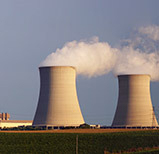
Exelon Generation operates 10 nuclear power plants and 17 reactors, primarily in the Northeast and Midwest, making it the largest U.S. owner of nuclear plants. It is one of the world’s largest producers and wholesale marketers of power. It also carries an extensive history as a defendant in asbestos-related lawsuits.
In February 2022, a financial report stated Exelon has an estimated $81 million in asbestos liabilities. Exelon estimated another $64 million would be dispersed in damages for claims filed up to the year 2055.
By 2005, Exelon had spent millions of dollars defending asbestos claims and paying compensatory damages. The company stated that it would also assume liabilities from PECO and Commonwealth Edison (ComEd), energy delivery subsidiaries which Exelon had purchased.
The Los Angeles Department of Water and Power, which serves about 4.1 million Southern California residents as the largest municipal utility in the United States, utilized asbestos in its power plants to insulate pipes, electrical wires, generators and other machinery.
In 2007, LADWP was fined $9,030 for demolishing several asbestos-containing structures and failing to notify the U.S. Environmental Protection Agency beforehand.

The demolition posed a threat to public health. If proper agency-mandated disposal procedures are not followed by companies, asbestos fibers are released into the air surrounding the demolition site. Workers and nearby residents may then inhale the fibers. Over time, this kind of exposure puts people at risk of developing asbestos-related diseases.
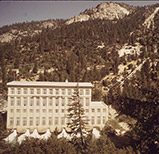
Southern California Edison is a century-old company that provides electric service to southern, coastal and central California. In 2010, the company was involved in 223 asbestos-related lawsuits that had yet to be settled or dismissed.
Southern California Edison’s Contractor Handbook notes that company buildings may still contain asbestos in various materials. Gaskets, insulation, ceiling tiles, wallboard, pipes, flooring and other general building materials are all noted as potential asbestos-containing materials.
Because of the widespread presence of asbestos, each contractor is provided a listing of all items and locations known to contain it.
Pacific Gas and Electric Company, better known as PG&E, has a storied history of environmental contamination in addition to occupational asbestos exposure.
For much of its existence, PG&E’s nuclear power plants were built with asbestos-containing products, usually as a form of insulation. Numerous workers and former employees – many of them welders, insulators, electricians and pipefitters – filed lawsuits against PG&E after they became ill with asbestos-related cancers and conditions.
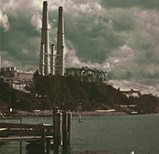
One 1998 case was brought by numerous residents of Pittsburg, Calif., near San Francisco. Pipes at PG&E’s 10th Street plant were improperly connected to a boiler, causing asbestos to contaminate homes in the area and boats at the city marina.
PG&E said it faced numerous lawsuits and was $12 billion in debt when it filed for bankruptcy in 2001. Four years later, PG&E paid $10.2 billion in damages to hundreds of creditors and resumed business.
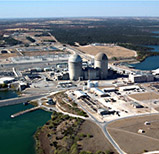
Asbestos was a problem at Comanche Peak Nuclear Power Plant in Central Texas before the plant even opened. In the years the reactors were under construction, painters, electricians, insulators, laborers, welders and heavy-equipment operators were exposed to asbestos without their knowledge and without proper safety precautions.
Before Comanche Park’s second reactor opened, the plant’s liabilities had resulted in hundreds of workers’ compensation claims related to asbestos exposure. For four years, beginning in 1989, about 2,000 workers from Comanche Peak and the nearby Texas Project plant filed asbestos-related lawsuits against their employers.
Linda Porter, a painter at Comanche Peak, was exposed to asbestos in 1988 when she and three other workers were given respirators and ordered to perform a test for the company: Grinding and power-sanding coatings known to contain silica and asbestos.
They were instructed to generate as much dust as possible while doing so. Porter shut down the test after several hours in the enclosed space. She was laid off a few weeks later. Porter believes she was subjected to the test, various other intimidation techniques and eventual termination because of her prior demands for a safer work environment.
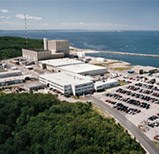
The Pilgrim Nuclear Generating Station in the historic town of Plymouth, Mass., was built in 1972 by Bechtel Power as part of Boston Edison. In 1988, Boston Edison proposed a complete restart of the Pilgrim Nuclear Power Plant. Objections to the project stemmed from fears of radioactivity, but one representative brought to light the issue of asbestos.
Peter Forman, a state representative, spoke about a previous asbestos abatement project at the plant. He was told by workers that the task was improperly carried out and that there was an unnecessary risk of exposure to the toxin.
Similar incidents have led to asbestos lawsuits involving Pilgrim Nuclear, in conjunction with Bechtel and Boston Edison.
It was sold in 1999 to Louisiana-based Entergy Corp. In 2008, Entergy Nuclear began plans to decommission the Pilgrim power plant, a project scheduled to be completed around 2050. Because the mineral was used extensively within the station, asbestos abatement will be a notable aspect of the decommissioning process. The removal is estimated to cost $4.3 million.

We can help you get compensation through grants, trust funds and more to help pay for mesothelioma treatment and other expenses.
See If You Qualify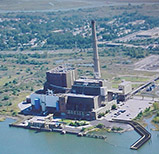
Located on the banks of Staten Island’s Arthur Kill Waterway, Arthur Kill Powerhouse was a defendant in at least one mesothelioma lawsuit. A 2007 case awarded $4 million to Joel Rosenberg, a former Arthur Kill Powerhouse electrician, and his wife.
Rosenberg was first exposed to asbestos in 1960 and received a mesothelioma diagnosis decades later. He died at the age of 64, not long after the ruling. Rosenberg’s cancer was linked to his time working at several different work sites in New York, including the Arthur Kill Powerhouse.
The presence of asbestos at Robert E. Ginna Nuclear, which sits on the southern shore of Lake Ontario in Ontario, N.Y., triggered a significant number of lawsuits against its owner, Constellation Energy Group, and a former owner, Rochester Gas and Electric.
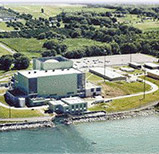
One 2000 lawsuit, filed against several companies by 17 utility workers formerly employed at the plant and other nearby power stations, claimed those companies were responsible for exposing workers to asbestos.
The men, who ranged in age from 56 to 75, had all developed asbestos-related diseases including mesothelioma. Three of the men died before the case was decided. The workers were awarded $2 million in compensation.
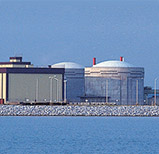
The Joseph M. Farley Nuclear Generating Station is a twin-unit power station located in Columbia, Ala., near the Alabama-Florida border. The plant, operated by Southern Nuclear Operation Company and owned by Alabama Power, was commissioned in 1977. The second unit was commissioned in 1981.
Construction at both facilities began in the early and mid-1970s, putting them at the tail end of an era when power plants heavily used asbestos for their construction. Former employees sued Farley, Alabama Power and Southern Nuclear over claims of asbestos exposure that resulted in cancer and wrongful death.
In 1997, after receiving notice from numerous subcontracted employees about asbestos exposure, the Occupational Health and Safety Administration inspected the Farley facility.
Plant operator Southern Nuclear Operating Company was fined for failing to identify all asbestos-containing material before allowing workers into the plant. The administration said the company failed to notify employees of the dangers they faced and implement adequate precautionary measures.
One of the oldest nuclear power plants in the United States, which sits on the border between New Hampshire and Massachusetts, Vermont Yankee Power Plant is the site of several environmental accidents and issues.
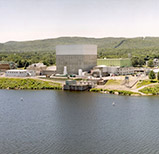
In 2007, one of the plant’s cooling towers collapsed. Residue saturated the nearby banks of the Connecticut River with asbestos, plastic, rotting wood and thousands of gallons of contaminated water.
Plant owner Entergy Nuclear of Louisiana, which bought the plant in 2002, has defended numerous asbestos claims, but Vermont Yankee has not been named in a significant number of lawsuits.
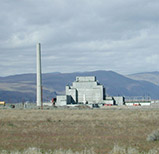
Although it was constructed with asbestos products, as were all power plants of its generation, Hanford Nuclear Site in Washington State does not have an extensive documented track record of asbestos-related incidents, medical issues or lawsuits. Despite the lack of incidents and lawsuits, a 2009 study conducted on former construction workers at Hanford showed they were 11 times more likely than the public to develop mesothelioma.
Your web browser is no longer supported by Microsoft. Update your browser for more security, speed and compatibility.
If you are looking for mesothelioma support, please contact our Patient Advocates at (855) 404-4592
The Mesothelioma Center at Asbestos.com has provided patients and their loved ones the most updated and reliable information on mesothelioma and asbestos exposure since 2006.
Our team of Patient Advocates includes a medical doctor, a registered nurse, health services administrators, veterans, VA-accredited Claims Agents, an oncology patient navigator and hospice care expert. Their combined expertise means we help any mesothelioma patient or loved one through every step of their cancer journey.
More than 30 contributors, including mesothelioma doctors, survivors, health care professionals and other experts, have peer-reviewed our website and written unique research-driven articles to ensure you get the highest-quality medical and health information.
My family has only the highest compliment for the assistance and support that we received from The Mesothelioma Center. This is a staff of compassionate and knowledgeable individuals who respect what your family is experiencing and who go the extra mile to make an unfortunate diagnosis less stressful. Information and assistance were provided by The Mesothelioma Center at no cost to our family.LashawnMesothelioma patient’s daughter


Whitmer, M. (2024, June 24). Asbestos Exposure in Power Plants. Asbestos.com. Retrieved April 10, 2025, from https://www.asbestos.com/power-plants/
Whitmer, Michelle. "Asbestos Exposure in Power Plants." Asbestos.com, 24 Jun 2024, https://www.asbestos.com/power-plants/.
Whitmer, Michelle. "Asbestos Exposure in Power Plants." Asbestos.com. Last modified June 24, 2024. https://www.asbestos.com/power-plants/.
An occupational scientist or another expert who specializes in occupational hazards reviewed the content on this page to ensure it meets current scientific standards and accuracy.
Arti Shukla, Ph.D., is an internationally renowned asbestos researcher known for her achievements in identifying biomarkers that cause mesothelioma. She is the director of the Shukla Research Lab, as well as a professor of pathology at The University of Vermont Larner College of Medicine.
Our fact-checking process begins with a thorough review of all sources to ensure they are high quality. Then we cross-check the facts with original medical or scientific reports published by those sources, or we validate the facts with reputable news organizations, medical and scientific experts and other health experts. Each page includes all sources for full transparency.
Please read our editorial guidelines to learn more about our content creation and review process.
